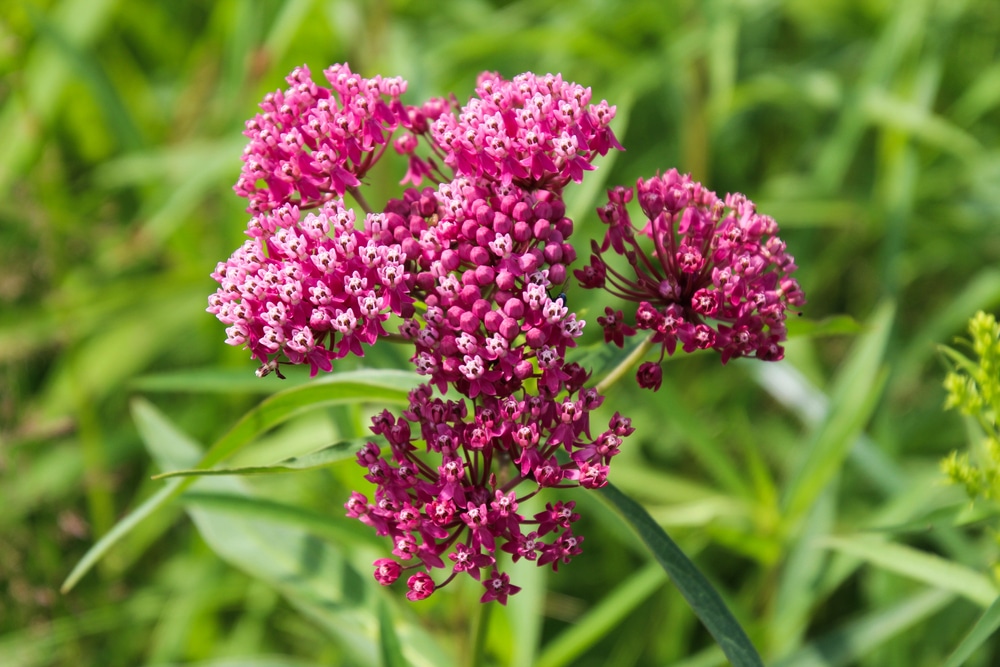Milkweed has its place in nature, given that it attracts pollinators, most notably the monarch butterfly. Nevertheless, milkweed is a prolific grower and can ruin the appearance of a lawn. Let’s look at what kills milkweed but not grass.
What Kills Milkweed But Not Grass

So, if you want to get rid of milkweed without harming your grass, the following are some of the best strategies you can employ.
Shade Out the Plant
Shading out is among the safest ways to remove milkweed while keeping your grass healthy. In this case, you would physically remove the milkweed by pulling the plant and its rhizome roots out of the ground.
A milkweed’s roots sprawl, so the ideal time to do this is when the plant first starts to form.
Then, place a three to four-inch thick layer of mulch on top of the spot where the milkweed grew. Since milkweed needs sun, it shouldn’t grow back. Now is an excellent opportunity to put a flowering plant over the site where the milkweed grew as well.
Mow Frequently
Mowing your milkweed every week or so will eventually kill it. That’s because milkweed naturally reaches up to six feet tall. Therefore, the plant will grow weaker the more often you mow it, given that it won’t have the chance to grow to its full potential.
Mowing is also helpful in preventing milkweed from producing seeds, which happens in the summer, with them dispersing in the fall.
So, even if your milkweed is already too tall for mowing this season, you’ll be prepared to prevent it from reproducing next season.
Till the Soil
Pulling up your milkweed and tilling the soil will tentatively damage the grass around it. But the advantage of this method is that it’s a surefire way to kill all the milkweed’s rhizomes compared to manually pulling it out of the ground.
Nevertheless, it’s best to opt for tilling if you live in an area where grass grows quickly. After tilling, you can apply grass seeds and should have a new set of fresh grass within weeks.
As long as the milkweed didn’t have an opportunity to produce seeds, it shouldn’t return.
Spray With Glyphosate
Before considering this method, it’s important to note that you must be extremely careful when using a glyphosate-based spray, as it’ll kill any plant that comes in contact with it, including grass.
However, glyphosate is one of the best ways to kill milkweed and keep it out of your yard for good. And if you’re careful, you can prevent it from touching your grass.
Should you choose glyphosate, use it on your milkweed when its buds form. Then, apply the herbicide only to the plant’s leaves; it’ll be in the perfect state for the chemical to travel down the plant.
Be sure to wear protective clothing when handling glyphosate, and apply it on a windy day to prevent it from reaching your grass.
A Final Note
It’s common to encounter monarch butterfly cocoons and caterpillars on milkweed. So, before you kill this plant, give it a good check. If you see either of these first two stages of the monarch’s life, do your best to move them to a safe place before treating your milkweed. You can also use vinegar to kill milkweed.
